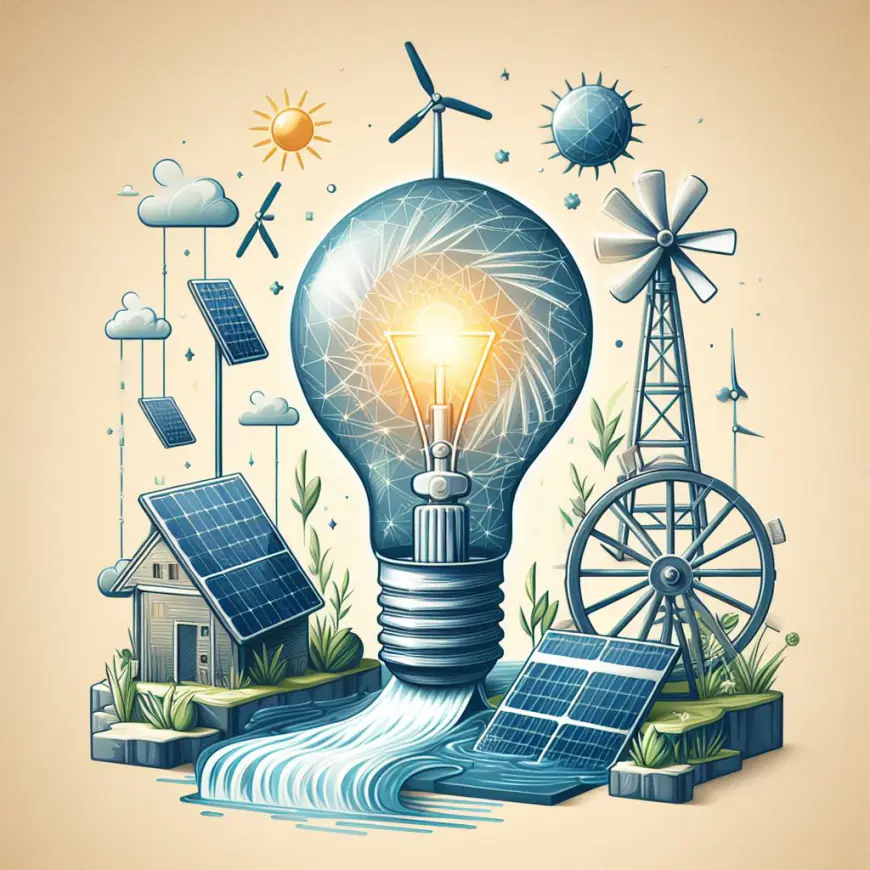Why Isn’t the World Powered by Clean Energy Yet?
“Dive into the reasons behind the slow shift to renewables and learn what’s holding back clean energy worldwide.”

The Road to Renewable: Unraveling the Global Hesitation Towards Clean Energy
Introduction: The Clean Energy Conundrum
In a world where climate change poses a significant threat to our planet, the shift towards clean energy is not just a choice but a necessity. Despite the urgency, the global embrace of renewable resources has been sluggish. This article delves into the complexities behind the slow adoption of clean energy and the multifaceted challenges that need addressing.
The Promise of Renewables: A Glimpse of a Sustainable Future
Renewable energy offers a vision of sustainability and environmental stewardship. From solar panels that harness the sun’s power to wind turbines that convert gusts into electricity, clean energy presents a solution to the world’s insatiable energy demands without compromising the health of our planet.
Economic and Political Barriers: The Tug-of-War with Fossil Fuels
Despite the apparent benefits, the transition to clean energy is hindered by economic and political factors. The entrenched fossil fuel industry, with its deep pockets and political influence, continues to lobby against renewables. Additionally, the initial investment for renewable infrastructure is substantial, causing hesitation among policymakers.
Technological and Infrastructural Challenges: The Innovation Imperative
Technological advancements in clean energy are rapidly evolving, yet the integration into existing power grids poses significant challenges. Energy storage technology, crucial for managing the intermittent nature of renewables, is still in developmental stages, necessitating further innovation and investment.
Social and Cultural Considerations: Changing Mindsets
The shift to clean energy isn’t just a technological or economic issue; it’s a cultural one. Societal habits and preferences are deeply ingrained, and the move away from fossil fuels requires a collective change in mindset and behavior.
The Role of Education and Awareness: Spreading the Green Message
Education plays a pivotal role in the clean energy transition. Raising awareness about the benefits of renewables and dispelling myths can pave the way for broader acceptance and support for green initiatives.
Global Inequities: The Clean Energy Divide
Developing nations face unique challenges in adopting clean energy. The disparity in resources between developed and developing countries creates a divide, with poorer nations struggling to finance the shift to renewables.
Bridging the Technological Gap: Innovation as the Key to Adoption
The path to widespread clean energy usage is paved with innovation. Emerging technologies like advanced solar cells, offshore wind farms, and enhanced geothermal systems promise greater efficiency and lower costs. However, bridging the gap between current capabilities and these futuristic solutions requires persistent research and development.
Financing the Future: Economic Strategies for Clean Energy
One of the most significant hurdles in the adoption of clean energy is financing. Governments and private sectors must collaborate to create economic incentives that encourage investment in renewable technologies. Subsidies, tax breaks, and grants are essential tools to level the playing field for clean energy solutions.
Policy and Governance: Steering the Ship Towards Sustainability
Effective policy is the rudder that guides the ship of clean energy. Legislation that supports renewable energy initiatives, such as feed-in tariffs and renewable portfolio standards, can accelerate the transition. International agreements like the Paris Agreement also play a crucial role in unifying global efforts.
The Power of the People: Grassroots Movements and Consumer Choice
The collective power of individuals can drive significant change. Grassroots movements advocating for clean energy and consumer choices favoring eco-friendly products send a strong message to businesses and governments alike. This bottom-up approach is vital for creating a demand for renewables.
Overcoming Reliability Concerns: Ensuring a Steady Energy Supply
Reliability is a common concern with renewable energy sources. To address this, the development of smart grids and battery storage systems is essential. These technologies can manage the variable output of renewable sources, ensuring a stable and reliable energy supply.
The Environmental Imperative: Protecting Our Planet for Future Generations
Ultimately, the transition to clean energy is about safeguarding our environment. Reducing carbon emissions and mitigating the effects of climate change are imperative for the survival of countless species, including our own. The moral argument for clean energy is clear and compelling.
Conclusion: A Unified Leap Towards Clean Energy
The journey towards a renewable future is complex and fraught with obstacles. However, with concerted efforts in policy reform, technological innovation, and societal transformation, the dream of a clean energy world is within reach. It is imperative for global leaders, communities, and individuals to unite in this endeavor for the sake of our planet’s future.
What's Your Reaction?








































